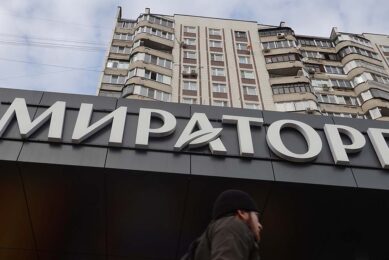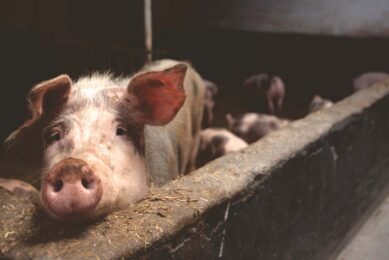Economic meltdown hinders US pork exports
Limited credit availability, volatile currency exchange rates and global economic uncertainty will create an uphill climb for US beef and pork exports in many foreign markets for the remainder of the year.
This was common theme provided by directors of the US Meat Export Federation’s (USMEF) international offices at the USMEF Strategic Planning Conference in Tucson, Ariz. Despite these obstacles, however, both products have performed extremely well in 2008, and are well-positioned for continued long-term strength.
Japan
Greg Hanes, USMEF Japan director noted that seafood consumption is trending downward creating opportunities for red meat. The strength of the yen against the US dollar and most other currencies also has enhanced Japan’s appetite for imported products. Through August, US pork exports to Japan have increased 29 percent in value over the same period last year, while beef exports have increased 64 percent. But the market holds even greater potential if market access can be improved.
According to Hanes, Japan’s gate-price system for imported pork hinders imports to some degree by moderating the current purchasing power of the yen. But that obstacle is not likely to go away until further progress in made in the Doha round of the World Trade Organization negotiations.
South Korea
Other markets have been much more heavily impacted by economic conditions and the surging value of the US dollar. South Korea, for example, has had a sluggish economy, and the Korean won has performed poorly in 2008 versus the US dollar. Still, Korea has increased its imports of US pork by 47 percent in volume and 28 percent in value over last year.
Russia
Russia – a rapidly emerging market for both US beef and pork – has also been slammed by the devaluation of its currency as well as a severe drop in oil revenues and other economic issues.“Russia is oversupplied and overstocked,” said John Brook, USMEF director for Europe, Russia and the Middle East. “There is a period of correction going on, which could last several months.”
Still, Brook is very excited about the prospects for US beef and pork in Russia, as evidenced by their performance in the first eight months of 2008.
Mexico
Japan
Greg Hanes, USMEF Japan director noted that seafood consumption is trending downward creating opportunities for red meat. The strength of the yen against the US dollar and most other currencies also has enhanced Japan’s appetite for imported products. Through August, US pork exports to Japan have increased 29 percent in value over the same period last year, while beef exports have increased 64 percent. But the market holds even greater potential if market access can be improved.
According to Hanes, Japan’s gate-price system for imported pork hinders imports to some degree by moderating the current purchasing power of the yen. But that obstacle is not likely to go away until further progress in made in the Doha round of the World Trade Organization negotiations.
South Korea
Other markets have been much more heavily impacted by economic conditions and the surging value of the US dollar. South Korea, for example, has had a sluggish economy, and the Korean won has performed poorly in 2008 versus the US dollar. Still, Korea has increased its imports of US pork by 47 percent in volume and 28 percent in value over last year.
Russia
Russia – a rapidly emerging market for both US beef and pork – has also been slammed by the devaluation of its currency as well as a severe drop in oil revenues and other economic issues.“Russia is oversupplied and overstocked,” said John Brook, USMEF director for Europe, Russia and the Middle East. “There is a period of correction going on, which could last several months.”
Still, Brook is very excited about the prospects for US beef and pork in Russia, as evidenced by their performance in the first eight months of 2008.
Mexico
Mexico is currently the largest foreign market for US beef and third-largest for US pork, but the recent devaluation of the peso has caused exports to slow from the record-breaking totals reached earlier in the year.
Asia Pacific
Joel Haggard, USMEF senior vice president for the Asia Pacific region, discussed the massive increase in US pork exports that entered China during the first half of 2008, and the reasons behind a recent slowdown.
With regard to China, the slower pace of pork exports appears to be more related to shifts in China’s policy priorities rather than current economic conditions.
Another factor USMEF is watching closely, Haggard said, is the food safety problem China has experienced with melamine contamination. While this issue is not related to US imports, it remains to be seen if it will cause any consumer backlash with regard to livestock-related food products.
Related Website
• USMEF
Click here for the free Pig Progress newsletter
Asia Pacific
Joel Haggard, USMEF senior vice president for the Asia Pacific region, discussed the massive increase in US pork exports that entered China during the first half of 2008, and the reasons behind a recent slowdown.
With regard to China, the slower pace of pork exports appears to be more related to shifts in China’s policy priorities rather than current economic conditions.
Another factor USMEF is watching closely, Haggard said, is the food safety problem China has experienced with melamine contamination. While this issue is not related to US imports, it remains to be seen if it will cause any consumer backlash with regard to livestock-related food products.
Related Website
• USMEF
Click here for the free Pig Progress newsletter
Join 18,000+ subscribers
Subscribe to our newsletter to stay updated about all the need-to-know content in the pigsector, three times a week. Beheer
Beheer










 WP Admin
WP Admin  Bewerk bericht
Bewerk bericht